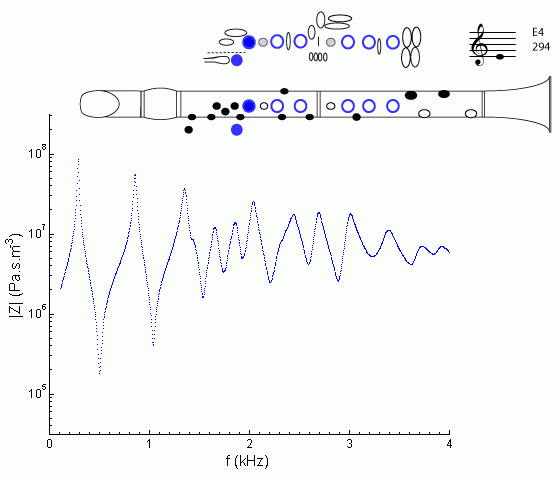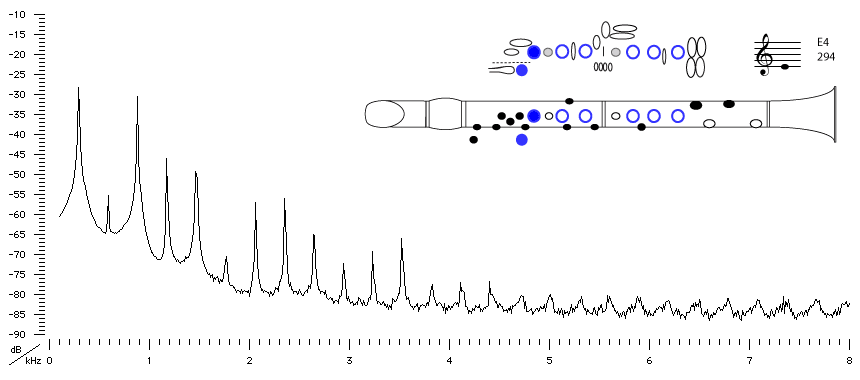| Acoustics of the clarinet |
Bb clarinet |
E4 |

|
Fingering Acoustic schematic Non-specialist introduction
to acoustic impedance Notes are the written pitch. |
Observe that, unlike the curves for the notes below D#4, the impedance curve has only two strong peaks that are in harmonic ratios (1:3). The sound still has several strong odd harmonics (particularly when played forte, as here) but, apart from the first two, they are not much assisted by resonances of the bore. For this reason, we could say that the throat register begins here: having only two harmonic resonances, fingerings in this register are more easily 'bent' (their pitch is more readily changed) by embouchure and vocal tract effects.

Sound spectrum
of a Bb clarinet
played using fingering for E4.
For more explanation, see
Introduction to clarinet acoustics
|
Contact:
Joe Wolfe
/ J.Wolfe@unsw.edu.au |